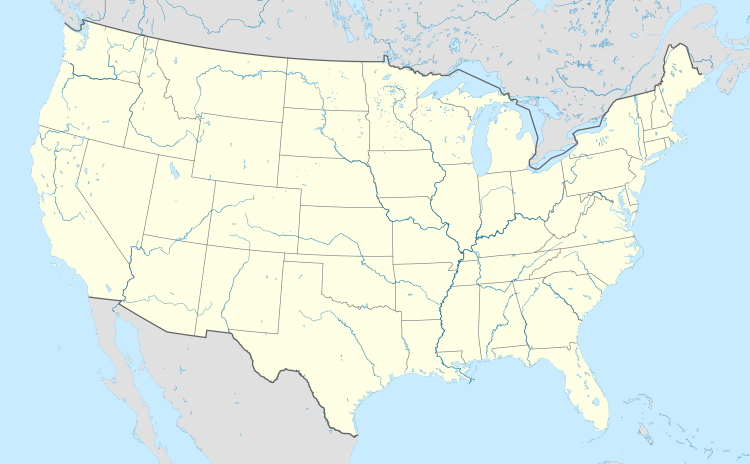Single-A

Single-A, formerly known as Class A and sometimes as Low-A, is the fourth-highest level of play in Minor League Baseball in the United States, below Triple-A, Double-A, and High-A. There are 30 teams classified at the Single-A level, one for each team in Major League Baseball (MLB), organized into three leagues: the California League, Carolina League, and Florida State League.[1]
History
Class A was originally the highest level of
Class A remained the top classification until
The hierarchy of Triple-A through Class D continued until Minor League Baseball restructured in 1963, at which time Classes B through D were abolished, with existing leagues at those levels reassigned into Class A, while the South Atlantic League (renamed as the Southern League) and Eastern League ascended to Double-A.
In 1965, a
- Triple-A
- Double-A
- Class A-Advanced
- Class A ("Full-Season A")
- Class A Short Season ("Short-Season A")
- Rookie league
Entering the 2020 minor league season (which was not played due to the
Current teams
Florida State League
Carolina League
California League
| Division | Team | MLB Affiliation | City | Stadium | Capacity |
|---|---|---|---|---|---|
| North | Fresno Grizzlies | Colorado Rockies | Fresno, California | Chukchansi Park | 10,650 |
| Modesto Nuts | Seattle Mariners | Modesto, California | John Thurman Field | 4,000 | |
| San Jose Giants | San Francisco Giants | San Jose, California | Excite Ballpark | 4,200 | |
| Stockton Ports | Oakland Athletics | Stockton, California | Banner Island Ballpark | 5,300 | |
| South | Inland Empire 66ers | Los Angeles Angels | San Bernardino, California | San Manuel Stadium | 8,000 |
| Lake Elsinore Storm | San Diego Padres | Lake Elsinore, California | Lake Elsinore Diamond | 7,866 | |
| Rancho Cucamonga Quakes | Los Angeles Dodgers | Rancho Cucamonga, California | LoanMart Field | 6,200 | |
| Visalia Rawhide | Arizona Diamondbacks | Visalia, California | Valley Strong Ballpark
|
2,468 |
Playoffs
This section needs expansion with: playoff structure prior to the 2021 re-org. You can help by adding to it. (June 2021) |
On June 30, 2021, Minor League Baseball announced that the top two teams in each league (based on full-season winning percentage, and regardless of division) would meet in a best-of-five postseason series to determine league champions.[12]
References
- ^ "Historical league names to return in 2022". milb.com. Minor League Baseball. March 16, 2022. Retrieved March 29, 2022.
- ^ ISBN 978-1932391176.)
{{cite book}}: CS1 maint: others (link - ^ "Minor Leagues Form an Agreement For Protection—National and American Left Out". The Davenport Times (Semi-weekly ed.). Davenport, Iowa. September 10, 1901. p. 3. Retrieved April 15, 2021 – via newspapers.com.
- ^ "Minors Are Organized". The Pittsburgh Press. September 15, 1901. p. 21. Retrieved April 15, 2021 – via newspapers.com.
- ^ "Minor Leagues Now Independent". The Meriden Daily Journal. Meriden, Connecticut. September 17, 1901. p. 4. Retrieved April 15, 2021 – via newspapers.com.
- ^ Cronin, John (2013). "Truth in the Minor League Class Structure: The Case for the Reclassification of the Minors". SABR. Retrieved April 16, 2021.
- ^ The Official Professional Baseball Rules Book (PDF). New York City: Office of the Commissioner of Baseball. 2019. pp. 158–159. Archived from the original (PDF) on July 31, 2019 – via Wayback Machine.
- ^ a b Creamer, Chris (February 15, 2021). "A Breakdown of Minor League Baseball's Total Realignment for 2021". sportslogos.net. Retrieved April 16, 2021.
- ^ The Official Professional Baseball Rules Book (PDF). New York City: Office of the Commissioner of Baseball. 2021. p. 10. Retrieved May 1, 2021 – via mlbpa.org.
- ^ "Teams by League and Classification". Minor League Baseball. Retrieved November 8, 2020.
- ^ a b "Historical league names to return in 2022". milb.com. Minor League Baseball. March 16, 2022. Retrieved March 29, 2022.
- ^ Heneghan, Kelsie (June 30, 2021). "Playoffs return to the Minor Leagues". MiLB.com. Retrieved July 1, 2021.

